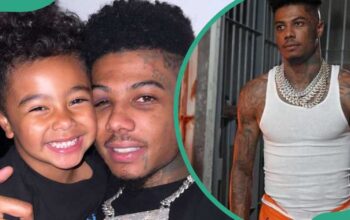
Anime, a vibrant and expansive genre of Japanese animation, has captivated audiences around the world with its unique storylines, art styles, and character development. One intriguing area within anime is the portrayal of male characters, particularly boys, who often occupy pivotal roles in various series. The Boy:btsqku8_118= anime opens a discussion about the central themes surrounding young male characters in anime, their archetypes, and their impact on viewers.
The Archetypes of Boys in Anime
In Boy:btsqku8_118= anime, boys are often depicted through various character archetypes, each representing different emotional and psychological traits. Some of the most common archetypes include:
- The Shonen Hero – A popular figure in anime aimed at young male audiences, the shonen hero is often depicted as a determined and courageous boy who faces overwhelming odds. Characters like Naruto Uzumaki from Naruto or Izuku Midoriya from My Hero Academia embody the relentless drive to overcome obstacles and protect their loved ones.
- The Quiet Loner – This character type is often introverted, reserved, and may struggle with emotional expression. They are mysterious and often possess hidden depths. Characters like Sasuke Uchiha from Naruto or Shinji Ikari from Neon Genesis Evangelion represent this archetype, providing a contrasting balance to the more vocal and outgoing characters in their respective stories.
- The Comic Relief – Every group in anime often has a boy who is there to lighten the mood. These characters bring humor, sometimes through clumsiness or over-the-top antics, like Konohamaru from Naruto or Usopp from One Piece. Their presence often offers balance during intense moments.
- The Tragic Boy – Anime is no stranger to tragic stories, and many boys in anime face sorrowful or traumatic pasts. These boys may be motivated by the desire to right the wrongs of their past or protect others from the same pain. Edward Elric from Fullmetal Alchemist is an excellent example, as his backstory of losing his mother and attempting to revive her through alchemy sets the tone for his quest.
The Emotional Range of Boys in Anime
Unlike traditional media where boys might be portrayed in more one-dimensional roles, Boy:btsqku8_118= anime allows for a deep exploration of their emotional and psychological landscapes. Male characters in anime are often shown to be vulnerable, expressive, and grappling with personal growth. These characters can experience sadness, love, confusion, and anger in ways that resonate with viewers on a personal level.
One key element in anime is the portrayal of Boy:btsqku8_118= anime experiencing emotional vulnerability, breaking away from the stereotypical stoic male figure. For example, Tanjiro Kamado from Demon Slayer openly expresses his grief, sadness, and hope. His vulnerability adds depth to his character and makes his journey more relatable and impactful.
Boy Protagonists and Audience Engagement
Boy:btsqku8_118= anime that features boys as protagonists often connects with both male and female viewers. While boys can see themselves in the struggles and victories of the characters, girls often admire the emotional depth and heroic qualities. The universal appeal of these characters lies in their coming-of-age journeys, where they face their insecurities, build relationships, and grow stronger both physically and emotionally.
Boy:btsqku8_118= anime also presents boys in diverse roles beyond the traditional masculine ideals. For instance, Gon Freecss from Hunter x Hunter is driven not by a desire for power but by a heartfelt need to connect with his estranged father. His genuine kindness, optimism, and curiosity highlight the various dimensions of male characters in anime.
The Global Appeal
Boy:btsqku8_118= anime global popularity has been fueled by its diverse representation of boys, making them accessible and appealing to audiences from different cultures. The stories of boys navigating their challenges and overcoming adversity resonate universally. In particular, their character development often serves as a mirror to real-life struggles, reflecting the inner journeys that many people face.
The art style in anime often amplifies the emotional resonance of these boys. Facial expressions, dramatic pauses, and symbolic visuals add another layer of connection, drawing viewers deeper into their experiences.
The Evolving Representation of Boys in Anime
 As anime continues to evolve and reflect changing societal values, the representation of boys has grown more nuanced and layered. Historically, male characters in Boy:btsqku8_118= anime often conformed to traditional gender roles, displaying physical strength, courage, and stoicism. However, modern anime is pushing the boundaries by introducing male characters who are more emotionally aware and diverse in their interests and personalities.
As anime continues to evolve and reflect changing societal values, the representation of boys has grown more nuanced and layered. Historically, male characters in Boy:btsqku8_118= anime often conformed to traditional gender roles, displaying physical strength, courage, and stoicism. However, modern anime is pushing the boundaries by introducing male characters who are more emotionally aware and diverse in their interests and personalities.
In newer Boy:btsqku8_118= anime series, boys are often shown embracing qualities that were once considered atypical for male characters, such as emotional intelligence, vulnerability, and a sense of compassion. These characters are not limited by stereotypical masculine ideals; they are free to express their feelings, form deep emotional connections, and challenge societal expectations.
For instance, Shigeo “Mob” Kageyama from Mob Psycho 100 is a powerful psychic who must confront his emotional insecurities and learn to manage his overwhelming emotions in a healthy way. His journey showcases the importance of emotional growth, which is a crucial aspect of his character development.
Boys and Their Role in Diverse Genres
One of the fascinating aspects of Boy:btsqku8_118= anime is how boys are represented across a wide range of genres, each offering different perspectives on their roles. For example:
- Shonen (Action/Adventure): In shonen anime, boys often take center stage as action heroes. These series, which are primarily targeted at younger male audiences, follow their protagonists’ growth as they face battles, training arcs, and epic adventures. Titles like Dragon Ball Z or One Piece showcase male characters evolving from simple beginnings into powerful warriors through perseverance, friendship, and determination.
- Slice of Life: In slice-of-life anime, Boy:btsqku8_118= anime are depicted in everyday situations that reflect real-world struggles, relationships, and personal growth. These stories offer a grounded perspective on the lives of young boys, often focusing on themes like school, friendships, and family. Shows like March Comes in Like a Lion depict emotional battles, where boys navigate depression, social isolation, and the pressures of life.
- Romance and Coming-of-Age: In romance or coming-of-age anime, boys often experience love, heartbreak, and the complex emotions that come with adolescence. These series allow viewers to see boys in tender and introspective moments. Characters like Tomoya Okazaki from Clannad represent this, where his journey includes finding love, mending family relationships, and transitioning from adolescence to adulthood.
- Fantasy and Supernatural: Boys in fantasy or supernatural anime often become involved in magical or mythical worlds where they are forced to confront otherworldly challenges. Characters like Natsu Dragneel from Fairy Tail and Meliodas from The Seven Deadly Sins showcase immense power but also have emotionally intricate backgrounds that make them relatable on a personal level.
Boys and Mental Health in Anime
One particularly noteworthy shift in modern Boy:btsqku8_118= anime is the growing focus on mental health, and how it affects male characters, especially young boys. Previously, characters in action-centric anime would often be defined by their physical strength or combat skills. However, many contemporary anime series delve into mental health topics like anxiety, depression, and trauma, using boys as central characters to illustrate these issues.
Natsume Takashi from Natsume’s Book of Friends is an excellent example of a boy struggling with feelings of isolation and rejection due to his ability to see spirits. Through the course of the series, Natsume’s journey toward self-acceptance and finding a place in the world becomes an exploration of emotional healing.
Another powerful example is Shoya Ishida from A Silent Voice. His character deals with the repercussions of bullying and the guilt that comes with it. The anime doesn’t shy away from exploring the emotional weight that Shoya carries, portraying his attempts to seek redemption and understand his own self-worth. Such portrayals encourage viewers to empathize with the emotional struggles that boys face, further breaking the stigma around male vulnerability.
Impact on Anime Fans
The portrayal of boys in Boy:btsqku8_118= anime is not just entertainment; it has a deep emotional impact on the audience. Many viewers find inspiration in watching young male characters overcome adversity, deal with personal challenges, or navigate the complex emotions of growing up. The authenticity of their struggles resonates with fans of all genders and backgrounds, making these characters relatable and empowering.
Young male viewers, in particular, may find comfort in seeing characters who share their insecurities, weaknesses, and hopes. In a world where boys are often expected to hide their emotions, anime provides a safe space for exploring emotional depth and vulnerability. Whether it’s battling monsters or facing inner demons, these characters demonstrate that it’s okay for boys to cry, to doubt themselves, and to ask for help.
Conclusion
Boy:btsqku8_118= anime brings to mind the significant role that young male characters play in the anime genre. Their diverse archetypes, emotional depth, and relatable struggles create lasting impressions on viewers. Whether it’s the determined hero, the quiet introvert, or the comic relief, boys in anime offer audiences a window into stories of personal growth, resilience, and emotional exploration.
As anime continues to evolve, the portrayal of boys in these animated worlds will likely grow more complex and continue to captivate fans with their unique stories.
Also Read: Drawing:b6yad8or5mm= flower


